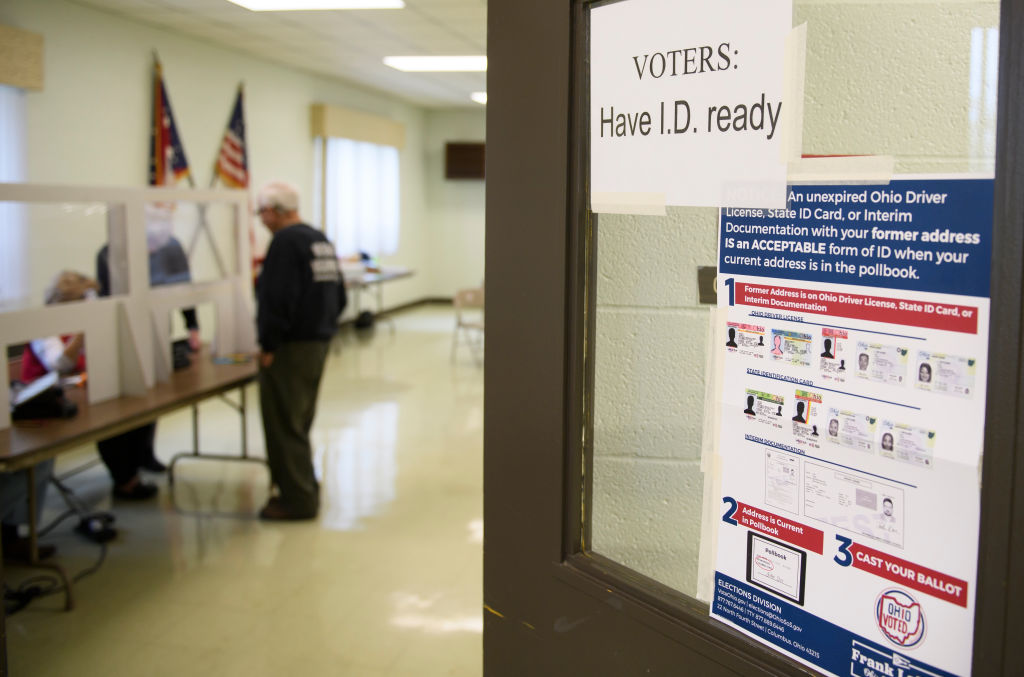An analysis of the link between health outcomes and voting disparities shows that Ohio suffers from barriers in both health and voting access.
The nonpartisan Healthy Democracy Healthy People coalition, with researchers from the Network for Public Health Law, updated its Health and Democracy Index this month to compare 12 “public health indicators” and voter turnout with a base data from Northern Illinois University called the Cost of Voting Index. study the impact of health on voting in each state.
“States that have more barriers to voting and lower voter turnout rates have poorer public health outcomes,” according to the study.
COVI studies state registration deadlines and restrictions, voting convenience, voter ID laws, polling hours, and the ability to vote early.
Public health indicators included in the research included reports on adult health, disability benefit rates in each state, as well as mortality rates, chronic disease prevalence, access to insurance and the number of doctors per capita, according to the study.
Researchers found a general improvement in public health indicators after 2020, which is useful for those who want to voice their opinions on local issues, choose elected officials who represent their needs and could propose measures to impact capacity voters to access things like health clinics. And services.
“Being healthy means people can vote physically and have the time and energy to follow voting processes and make voting decisions,” the study says.
The study showed that Ohio suffers from disparities in health and voting access, which are considered linked when it comes to representation and health outcomes.
Screenshot courtesy of Health Democracy Healthy People
Barriers to health and voting can create a “self-perpetuating feedback loop,” researchers say, meaning that people in poor health are less likely to vote, and those who don’t vote “are more likely to declare that they are in poor health. »
“This tends to affect people with lower income and lower education levels, as well as people of color, more than other population groups,” the study says, adding that the result is “an underrepresentation of these communities in important policy decisions that shape health and well-being.” »
Ohio’s infant mortality rate remained a source of criticism before the COVID-19 pandemic, but racial disparities in infant mortality persisted even afterward, which research from the Health and Democracy Index found , could be solved by better health and voting policy.
“For example, infant mortality rates are higher among black and Native American communities than among white communities, but this disparity decreases for all racial and ethnic groups in states that have better civic health and voter turnout” , according to the study.
Ohio has hit the mark when it comes to mail-in options for elections, including mail-in ballots, and the state has been recognized in research for restoring voting rights after incarceration. This was not included in the study’s analysis of “inclusive registration,” such as automatic voter registration, same-day registration, and election day.
The state found itself on the negative side of the study’s analysis of the nation’s restrictive voter ID laws, finding itself among those who “need additional documentation in elections, such as a photo ID, even after voters have already established their eligibility.”
In recent changes to Ohio laws, lawmakers changed the allowed forms of identification Ohioans can bring to the polls, banning the use of Social Security cards, birth certificates, utility bills or “notice of registration” cards from the Ohio Secretary of State, for example.
The legislative changes, signed by Gov. Mike DeWine earlier this year, also extended absentee voting deadlines to four days before Election Day and eliminated the Monday before the election as an early voting day.
Ohio Health Indicators showed that 6.6% of Ohioans reported a lack of health insurance and 13.5% of households fell below the federal poverty line in the state.
In terms of civic participation, the study showed a 67% voter turnout rate in the state and a 77% voter registration rate.
The study recommends removing barriers to voting access, which could lead to increased support for programs aimed at improving community participation and even health.
“Elections are the largest public events we hold nationally,” the study concludes. “Higher rates of community participation and social contact are linked to higher rates of civic participation and better public health outcomes. »
GET MORNING NEWSPAPERS IN YOUR INBOX
#National #study #shows #Ohio #suffers #health #disparities #impacting #ability #vote #Ohio #Capital #Journal
Image Source : ohiocapitaljournal.com

